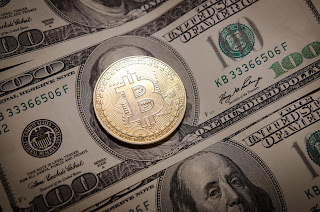Bitcoin's Monetary Policy: A Game-Changing Approach to Money
In the world of money, the term "monetary policy" refers to the way in which a central bank manages the money supply and interest rates to achieve certain economic goals, such as controlling inflation and promoting economic growth. But when it comes to Bitcoin, things are a little different.
Bitcoin is a decentralized digital currency that operates on a unique monetary policy. Instead of relying on a central authority to manage the money supply, Bitcoin's monetary policy is determined by the rules of the Bitcoin protocol itself. In other words, Bitcoin's monetary policy is algorithmic, rather than discretionary.
So, what does this mean for the world of money? For starters, it means that Bitcoin is not subject to the same inflationary pressures as traditional fiat currencies. While central banks can print money at will, causing inflation and eroding the value of people's savings, Bitcoin's supply is limited to 21 million coins. This means that, unlike fiat currencies, Bitcoin is deflationary in nature, with the potential to increase in value over time.
But Bitcoin's monetary policy is not just about limiting the money supply. It's also about incentivizing people to participate in the Bitcoin network. For example, miners who maintain the network by verifying transactions and adding them to the blockchain are rewarded with new bitcoins. However, the rate at which new bitcoins are created is designed to decrease over time, which means that the supply of new coins is gradually reduced. This is known as the "halving," and it happens every four years. The most recent halving occurred in May 2020, and it resulted in a reduction of the block reward from 12.5 to 6.25 bitcoins.
This gradual reduction in the block reward serves two important purposes. First, it helps to ensure the long-term viability of the Bitcoin network by gradually reducing the supply of new coins. Second, it provides a built-in mechanism for increasing the value of existing coins by making them more scarce.
But perhaps the most interesting thing about Bitcoin's monetary policy is that it is completely transparent and predictable. Unlike central banks, which can make sudden and unpredictable changes to interest rates and money supply, Bitcoin's rules are fixed and known in advance. This means that people can have confidence in the long-term stability of the Bitcoin network, and they can make informed decisions about how to use it.
Bitcoin's monetary policy is based on a set of rules that are enforced by the Bitcoin protocol. These rules are designed to ensure that new bitcoins are added to the network in a way that is fair and predictable, and that the supply of new coins is gradually reduced over time. This is accomplished through a process known as "mining."
Mining is the process by which new bitcoins are added to the Bitcoin network. Miners are individuals or groups of individuals who use powerful computers to solve complex mathematical problems in order to verify transactions and add them to the blockchain. As a reward for their work, miners receive newly minted bitcoins.
The rate at which new bitcoins are created is designed to decrease over time. This is accomplished through a process called "halving." Every four years, the block reward (the amount of bitcoins awarded to miners for adding a new block to the blockchain) is halved. The most recent halving occurred in May 2020, and the next one is scheduled for 2024. This gradual reduction in the block reward serves to limit the overall supply of bitcoins, making them more scarce and potentially more valuable.
Bitcoin's monetary policy is also designed to be resistant to inflation. Unlike fiat currencies, which are subject to inflationary pressures as central banks print more money, Bitcoin has a fixed supply. This means that the value of Bitcoin is not eroded over time by inflation, making it a potentially attractive store of value.
One interesting aspect of Bitcoin's monetary policy is that it is decentralized. Unlike central banks, which are controlled by a small group of individuals, Bitcoin's rules are enforced by the entire network of users. This means that no one person or group can change the rules of the network, making it more resistant to manipulation or corruption.
Another interesting aspect of Bitcoin's monetary policy is that it is transparent. Because the rules are enforced by the entire network of users, anyone can verify that the rules are being followed. This provides a level of trust and confidence in the system that is not present in traditional fiat currencies, which are often subject to manipulation and hidden agendas.
Overall, Bitcoin's monetary policy represents a revolutionary approach to money. By relying on a decentralized, transparent, and predictable system for managing the money supply, Bitcoin offers a unique alternative to traditional fiat currencies. While there are still many challenges to be overcome before Bitcoin can achieve mainstream adoption, its monetary policy represents a promising step forward in the evolution of money.
By Vishal Solomon

Comments
Post a Comment